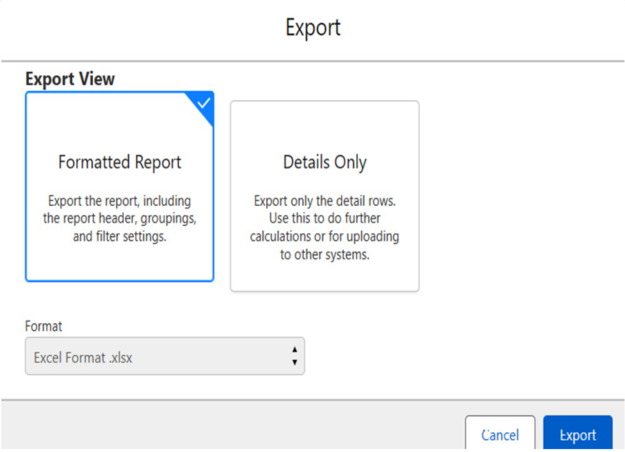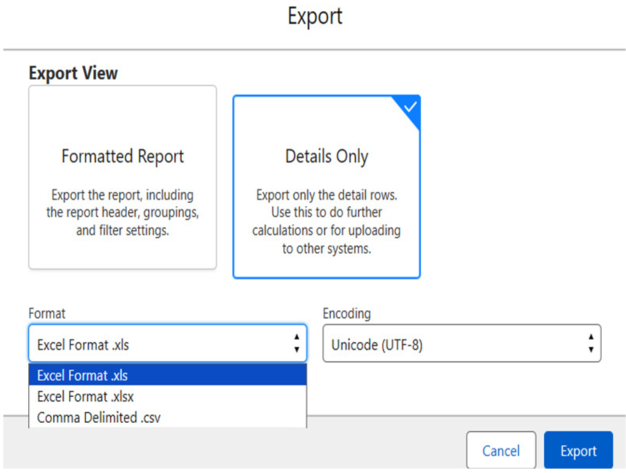The full description of how to use Salesforce’s reporting features will be given in the Reports and Dashboards chapter. Here, we will focus only on the exporting possibilities of the Salesforce Report Builder.
To export Salesforce data via Report Builder, let’s take the following steps:
- Run or Save and Run a report.
- Click the Export button.
- Choose Export View. • Formatted Report – Export the data that is visible in Report Builder. Besides the data, the groupings and report header are also exported.

Figure 3.3: Export view
- Details Only – Only raw data are exported. When choosing this option, you will also be able to choose the file format and encoding. Besides the .xls or .xlsx Excel formats, you can choose the .csv format. You are also served with many data encoding options. Encoding is responsible for displaying proper letters/characters.

Figure 3.4: Export format
4. Click the Export button. The file will be downloaded and saved on your computer. If there is a large amount of data, it may take slightly longer.
Tips
I seldom use the Formatted Report option because the exported data can be troublesome to edit. Columns or rows may be merged, making it hard to manipulate the data in Excel or Excel-like tools. Most of the time, you’ll want to use the Details Only export option since it provides the data in an easy-to-manipulate/update format. The .csv export format should be used when you know that you will need to import the data back to Salesforce as Salesforce importing tools use the .csv data format.
When I’m exporting data, I mostly use UTF-8 encoding as this gives me a greater chance that the letters/characters will be displayed properly when editing the data in Excel or an Excel-like program.
